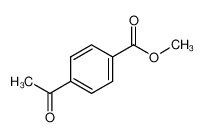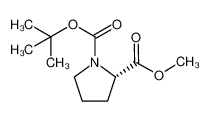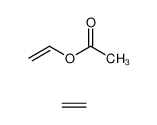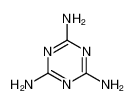| Product name | Dimethyl dicarbonate |
|---|
| Product number | - |
|---|---|
| Other names | DMPC Dimethyl pyrocarbonate Pyrocarbonic acid dimethyl ester |
| Identified uses | For industry use only. Food additives |
|---|---|
| Uses advised against | no data available |
| Company | MOLBASE (Shanghai) Biotechnology Co., Ltd. |
|---|---|
| Address | Floor 4 & 5, Building 12, No. 1001 North Qinzhou Road, Xuhui District, Shanghai, China |
| Telephone | +86(21)64956998 |
| Fax | +86(21)54365166 |
| Emergency phone number | +86-400-6021-666 |
|---|---|
| Service hours | Monday to Friday, 9am-5pm (Standard time zone: UTC/GMT +8 hours). |
Acute toxicity - Oral, Category 4
Skin corrosion, Category 1B
Acute toxicity - Inhalation, Category 2
2.2 GHS label elements, including precautionary statements| Pictogram(s) | 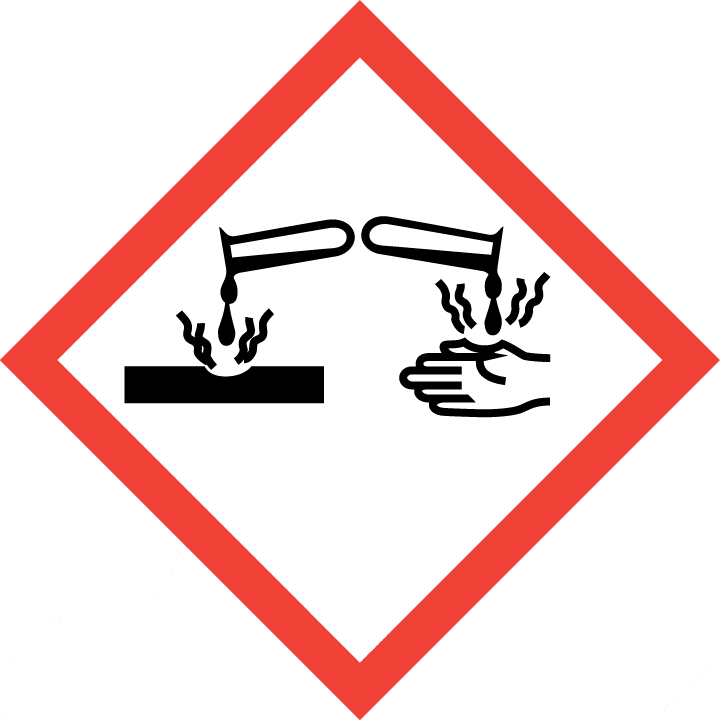 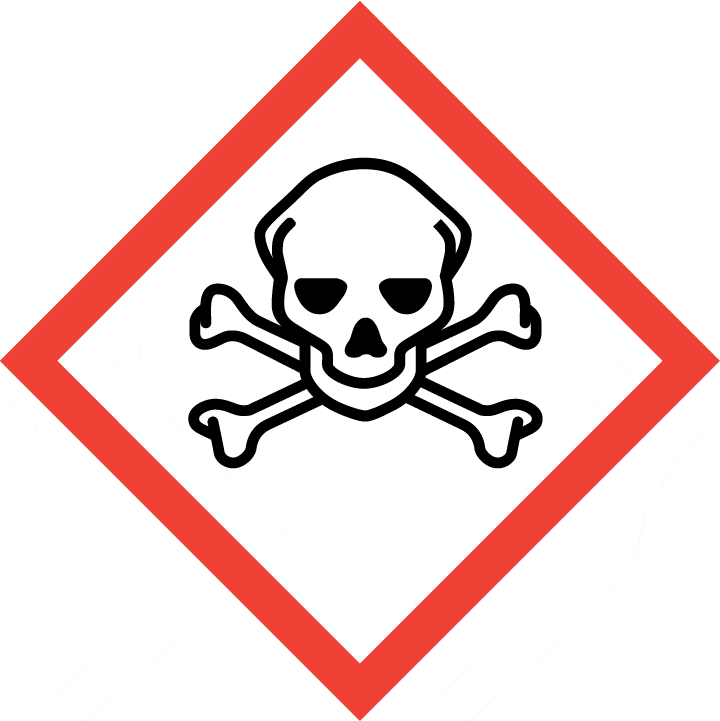 |
|---|---|
| Signal word | Danger |
| Hazard statement(s) | H302 Harmful if swallowed H314 Causes severe skin burns and eye damage H330 Fatal if inhaled |
| Precautionary statement(s) | |
| Prevention | P264 Wash ... thoroughly after handling. P270 Do not eat, drink or smoke when using this product. P260 Do not breathe dust/fume/gas/mist/vapours/spray. P280 Wear protective gloves/protective clothing/eye protection/face protection. P271 Use only outdoors or in a well-ventilated area. P284 [In case of inadequate ventilation] wear respiratory protection. |
| Response | P301+P312 IF SWALLOWED: Call a POISON CENTER/doctor/…if you feel unwell. P330 Rinse mouth. P301+P330+P331 IF SWALLOWED: Rinse mouth. Do NOT induce vomiting. P303+P361+P353 IF ON SKIN (or hair): Take off immediately all contaminated clothing. Rinse skin with water [or shower]. P363 Wash contaminated clothing before reuse. P304+P340 IF INHALED: Remove person to fresh air and keep comfortable for breathing. P310 Immediately call a POISON CENTER/doctor/… P321 Specific treatment (see ... on this label). P305+P351+P338 IF IN EYES: Rinse cautiously with water for several minutes. Remove contact lenses, if present and easy to do. Continue rinsing. P320 Specific treatment is urgent (see ... on this label). |
| Storage | P405 Store locked up. P403+P233 Store in a well-ventilated place. Keep container tightly closed. |
| Disposal | P501 Dispose of contents/container to ... |
none
3.Composition/information on ingredients 3.1 Substances| Chemical name | Common names and synonyms | CAS number | EC number | Concentration |
|---|---|---|---|---|
| Dimethyl dicarbonate | Dimethyl dicarbonate | 4525-33-1 | none | 100% |
Consult a physician. Show this safety data sheet to the doctor in attendance.
If inhaledIf breathed in, move person into fresh air. If not breathing, give artificial respiration. Consult a physician.
In case of skin contactWash off with soap and plenty of water. Consult a physician.
In case of eye contactRinse thoroughly with plenty of water for at least 15 minutes and consult a physician.
If swallowedNever give anything by mouth to an unconscious person. Rinse mouth with water. Consult a physician.
4.2 Most important symptoms/effects, acute and delayedno data available
4.3 Indication of immediate medical attention and special treatment needed, if necessaryImmediate first aid: Ensure that adequate decontamination has been carried out. If patient is not breathing, start artificial respiration, preferably with a demand-valve resuscitator, bag-valve-mask device, or pocket mask, as trained. Perform CPR as necessary. Immediately flush contaminated eyes with gently flowing water. Do not induce vomiting. If vomiting occurs, lean patient forward or place on left side (head-down position, if possible) to maintain an open airway and prevent aspiration. Keep patient quiet and maintain normal body temperature. Obtain medical attention. /Esters and related compounds/
5.Fire-fighting measures 5.1 Extinguishing media Suitable extinguishing mediaSuitable Extinguishing Media: All extinguishing media are suitable. Special Fire Fighting Procedures: Firefighters should be equipped with self-contained breathing apparatus to protect against potentially toxic and irritating fumes. Use cold water spray to cool fire-exposed containers to minimize risk of rupture.
5.2 Specific hazards arising from the chemicalno data available
5.3 Special protective actions for fire-fightersWear self-contained breathing apparatus for firefighting if necessary.
6.Accidental release measures 6.1 Personal precautions, protective equipment and emergency proceduresUse personal protective equipment. Avoid dust formation. Avoid breathing vapours, mist or gas. Ensure adequate ventilation. Evacuate personnel to safe areas. Avoid breathing dust. For personal protection see section 8.
6.2 Environmental precautionsPrevent further leakage or spillage if safe to do so. Do not let product enter drains. Discharge into the environment must be avoided.
6.3 Methods and materials for containment and cleaning upSpill and Leak Procedures: Cleanup personnel must use appropriate personal protective equipment. Do not allow spilled material or wash water to enter sewers, surface waters, or groundwater systems. Remove all sources of ignition, including flames, heat, and sparks. Ventilate area to remove vapors or dust. Evacuate and keep unnecessary people out of spill area. Cover spill with damp, fluid-binding material (for example, sand, sawdust, chemical binder based on calcium silicate hydrate). Transfer to an open waste container after approximately one hour, cover loosely and remove to an isolated area. Do not seal the container as carbon dioxide given off by the slow reaction between Velcorin and water may cause a tightly sealed container to burst. Flush the spill with cold water but avoid flushing into open drains. Hot water should never be used for this purpose since it would cause considerable vaporization of the spilled material. Use the paper Velcorin indicator strips to insure that there is no residual Dimethyl Dicarbonate in the air.
7.Handling and storage 7.1 Precautions for safe handlingAvoid contact with skin and eyes. Avoid formation of dust and aerosols. Avoid exposure - obtain special instructions before use.Provide appropriate exhaust ventilation at places where dust is formed. For precautions see section 2.2.
7.2 Conditions for safe storage, including any incompatibilitiesStorage Temperature: minimum: 20 °C (68 deg F); maximum: 30°C (86 deg F). Storage Period: 12 Months: Keep in a dry place. Expiration date on label is day/month/year. Handling/Storage Precautions: Do not breathe vapors or spray mist. Do not get on skin or clothing. Do not get in eyes. Do not taste or swallow. Use only with adequate ventilation/personal protection. Wash thoroughly after handling. Keep container closed when not in use. Store in a dry place away from excessive heat in original or similar containers. Protect from freezing. Further Info on Storage Conditions: Avoid extreme heat. Product can react with water. Avoid contact with moisture/water. Light sensitive. If the material does crystallize, it must be reliquified before being used. The recommended method to reliquify is to simply place the container in an appropriate storage area and allow it to gradually reach ambient temperatures. An alternative is to reliquify by gently heating it in a water bath. Do NOT apply heat/flame directly to container.
8.Exposure controls/personal protection 8.1 Control parameters Occupational Exposure limit valuesno data available
Biological limit valuesno data available
8.2 Appropriate engineering controlsHandle in accordance with good industrial hygiene and safety practice. Wash hands before breaks and at the end of workday.
8.3 Individual protection measures, such as personal protective equipment (PPE) Eye/face protectionSafety glasses with side-shields conforming to EN166. Use equipment for eye protection tested and approved under appropriate government standards such as NIOSH (US) or EN 166(EU).
Skin protectionWear impervious clothing. The type of protective equipment must be selected according to the concentration and amount of the dangerous substance at the specific workplace. Handle with gloves. Gloves must be inspected prior to use. Use proper glove removal technique(without touching glove's outer surface) to avoid skin contact with this product. Dispose of contaminated gloves after use in accordance with applicable laws and good laboratory practices. Wash and dry hands. The selected protective gloves have to satisfy the specifications of EU Directive 89/686/EEC and the standard EN 374 derived from it.
Respiratory protectionWear dust mask when handling large quantities.
Thermal hazardsno data available
9.Physical and chemical properties| Physical state | Colourless liquid, decomposes in aqueous solution. It is corrosive to skin and eyes and toxic by inhalation and ingestion |
|---|---|
| Colour | Clear, colorless liquid |
| Odour | no data available |
| Melting point/ freezing point | 15-17ºC |
| Boiling point or initial boiling point and boiling range | 45-46°C/5mmHg(lit.) |
| Flammability | no data available |
| Lower and upper explosion limit / flammability limit | no data available |
| Flash point | 80°C |
| Auto-ignition temperature | Approximately 465°C (869 deg F) |
| Decomposition temperature | no data available |
| pH | no data available |
| Kinematic viscosity | no data available |
| Solubility | In water, 4.77X10+5 mg/L at 25°C (est) |
| Partition coefficient n-octanol/water (log value) | log Kow = -0.86 (est) |
| Vapour pressure | 1.46 mm Hg at 25°C (est) |
| Density and/or relative density | 1.25g/mLat 25°C(lit.) |
| Relative vapour density | no data available |
| Particle characteristics | no data available |
no data available
10.2 Chemical stabilityStable under recommended storage conditions.
10.3 Possibility of hazardous reactionsCombustible
10.4 Conditions to avoidno data available
10.5 Incompatible materialsno data available
10.6 Hazardous decomposition productsHazardous decomposition products: By Fire and Thermal Decomposition: Methanol; Carbon oxides, nitrogen oxides (NOx), other potentially toxic fumes.
11.Toxicological information Acute toxicity- Oral: LD50 Mouse (female) oral 752.7 mg/kg
- Inhalation: LC50 Mouse (female) inhalation >1477 mg/cu m/ 4 hours
- Dermal: no data available
no data available
Serious eye damage/irritationno data available
Respiratory or skin sensitizationno data available
Germ cell mutagenicityno data available
Carcinogenicityno data available
Reproductive toxicityno data available
STOT-single exposureno data available
STOT-repeated exposureno data available
Aspiration hazardno data available
12.Ecological information 12.1 Toxicity- Toxicity to fish: no data available
- Toxicity to daphnia and other aquatic invertebrates: no data available
- Toxicity to algae: no data available
- Toxicity to microorganisms: no data available
AEROBIC: While biodegradation data for dimethyl dicabonate were not available(SRC, 2013), dimethyl carbonate, a structural analog, was >90% biodegraded in 28 days using an activated sludge inoculum in the OECD 301C test (Modified MITI)(1).
12.3 Bioaccumulative potentialAn estimated BCF of 3.2 was calculated in fish for dimethyl dicarbonate(SRC), using an estimated log Kow of -0.86(1) and a regression-derived equation(2). According to a classification scheme(3), this BCF suggests the potential for bioconcentration in aquatic organisms is low(SRC).
12.4 Mobility in soilUsing a structure estimation method based on molecular connectivity indices(1), the Koc of dimethyl dicarbonate can be estimated to be 1(SRC). According to a classification scheme(2), this estimated Koc value suggests that dimethyl dicarbonate is expected to have very high mobility in soil.
12.5 Other adverse effectsno data available
13.Disposal considerations 13.1 Disposal methods ProductThe material can be disposed of by removal to a licensed chemical destruction plant or by controlled incineration with flue gas scrubbing. Do not contaminate water, foodstuffs, feed or seed by storage or disposal. Do not discharge to sewer systems.
Contaminated packagingContainers can be triply rinsed (or equivalent) and offered for recycling or reconditioning. Alternatively, the packaging can be punctured to make it unusable for other purposes and then be disposed of in a sanitary landfill. Controlled incineration with flue gas scrubbing is possible for combustible packaging materials.
14.Transport information 14.1 UN Number| ADR/RID: UN2927 | IMDG: UN2927 | IATA: UN2927 |
| ADR/RID: TOXIC LIQUID, CORROSIVE, ORGANIC, N.O.S. |
| IMDG: TOXIC LIQUID, CORROSIVE, ORGANIC, N.O.S. |
| IATA: TOXIC LIQUID, CORROSIVE, ORGANIC, N.O.S. |
| ADR/RID: 8 | IMDG: 8 | IATA: 8 |
| ADR/RID: II | IMDG: II | IATA: II |
| ADR/RID: no | IMDG: no | IATA: no |
no data available
14.7 Transport in bulk according to Annex II of MARPOL 73/78 and the IBC Codeno data available
15.Regulatory information 15.1 Safety, health and environmental regulations specific for the product in question| Chemical name | Common names and synonyms | CAS number | EC number |
|---|---|---|---|
| Dimethyl dicarbonate | Dimethyl dicarbonate | 4525-33-1 | none |
| European Inventory of Existing Commercial Chemical Substances (EINECS) | Listed. | ||
| EC Inventory | Listed. | ||
| United States Toxic Substances Control Act (TSCA) Inventory | Listed. | ||
| China Catalog of Hazardous chemicals 2015 | Not Listed. | ||
| New Zealand Inventory of Chemicals (NZIoC) | Listed. | ||
| Philippines Inventory of Chemicals and Chemical Substances (PICCS) | Listed. | ||
| Vietnam National Chemical Inventory | Not Listed. | ||
| Chinese Chemical Inventory of Existing Chemical Substances (China IECSC) | Listed. | ||
| Creation Date | Aug 19, 2017 |
|---|---|
| Revision Date | Aug 19, 2017 |
- CAS: Chemical Abstracts Service
- ADR: European Agreement concerning the International Carriage of Dangerous Goods by Road
- RID: Regulation concerning the International Carriage of Dangerous Goods by Rail
- IMDG: International Maritime Dangerous Goods
- IATA: International Air Transportation Association
- TWA: Time Weighted Average
- STEL: Short term exposure limit
- LC50: Lethal Concentration 50%
- LD50: Lethal Dose 50%
- EC50: Effective Concentration 50%
- IPCS - The International Chemical Safety Cards (ICSC), website: http://www.ilo.org/dyn/icsc/showcard.home
- HSDB - Hazardous Substances Data Bank, website: https://toxnet.nlm.nih.gov/newtoxnet/hsdb.htm
- IARC - International Agency for Research on Cancer, website: http://www.iarc.fr/
- eChemPortal - The Global Portal to Information on Chemical Substances by OECD, website: http://www.echemportal.org/echemportal/index?pageID=0&request_locale=en
- CAMEO Chemicals, website: http://cameochemicals.noaa.gov/search/simple
- ChemIDplus, website: http://chem.sis.nlm.nih.gov/chemidplus/chemidlite.jsp
- ERG - Emergency Response Guidebook by U.S. Department of Transportation, website: http://www.phmsa.dot.gov/hazmat/library/erg
- Germany GESTIS-database on hazard substance, website: http://www.dguv.de/ifa/gestis/gestis-stoffdatenbank/index-2.jsp
- ECHA - European Chemicals Agency, website: https://echa.europa.eu/










